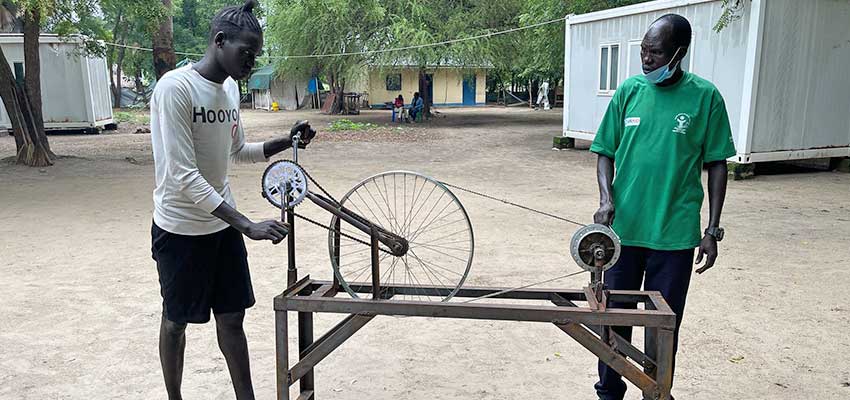
"This project is giving us a way to feed ourselves."
“Other projects will give you money, but when you get the money, you eat with it, and it’s gone. This project is giving us something we can use to make money, it’s giving us a way to feed ourselves,” says Anna, an older Murle woman. Her words opened the final reflection session of a four-day MIT D-Lab Creative Capacity Building for Business (CCB-B) training that Heewon Lee and I gave in June 2022 in Pibor, Greater Pibor Administrative Area (GPAA), South Sudan. Older women have a great deal of power and authority in the Murle culture and people listened respectfully and voiced agreement with her.
The reflection session took place in the innovation center in Pibor established by the Youth Social Advocacy Team (YSAT), D-Lab’s community partner in South Sudan The Pibor innovation center is part of a USAID-funded D-Lab pilot project called BRIDGE (Building Resiliency and Social Cohesion through Innovation, Design and Grassroots Empowerment) to set up local innovation ecosystems in two areas in Jonglei State and Greater Pibor Administrative Area (GPAA) that are in frequent armed conflict with one another. In addition to the one in Pibor, a Murle region, YSAT is establishing an innovation ecosystem in Duk Padiet of Jonglei State, an area populated by Nuer and Dinka.
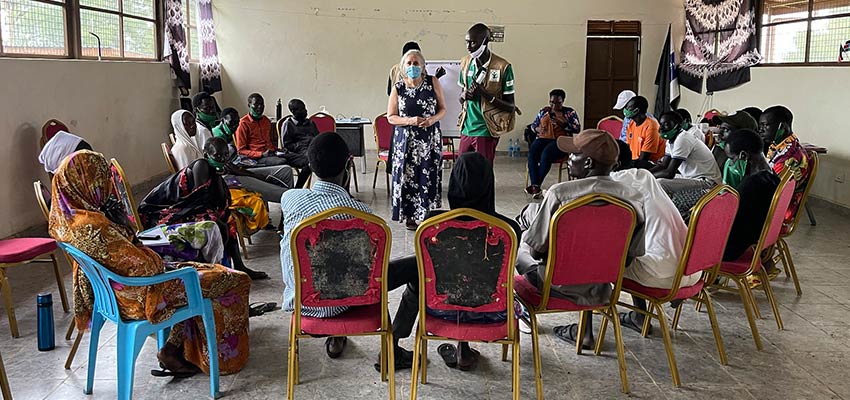
Using Creative Capacity Building to reduce ethnic conflict
Between January and June 2022, there have been three incidents of armed conflict between the two communities, leaving several dozen people dead and injured. D-Lab and YSAT share a vision that these two local innovation systems can open a space for neutral communication between these two groups. In each community, the ecosystem is anchored by an innovation center run by local staff trained by D-Lab’s Amy Smith in October and November 2022 in Northern Uganda. The local YSAT staff lead Creative Capacity Building (CCB) workshops in both towns, training people that the local leadership structures selects to design and build technologies that can solve problems they have prioritized. The center provides tools, materials and on-going mentoring for refining and building technologies. In the July 2022 workshops, groups from both sites will meet to work together in a six-day co-creation activity with Amy Smith in Juba.
During the concluding reflection of the workshop for Creative Capacity Building for Business (CCB-B) in Pibor, some of the participants were deeply impressed that YSAT ‘s director, John Jal Dak, directed work and resources to an area populated by an ethnic group inimical to his own (Nuer from neighboring Ayod County). As part of the concluding reflection, John explained how important it is for all of them to think of themselves as South Sudanese and to work across ethnic and generational difference, that this is how South Sudanese will build peace after decades of war. The make-up of the YSAT staff models this, it includes people from different ethnic groups in South Sudan, some of which are fighting each other, to demonstrate that a common purpose and values can unite people across their differences.
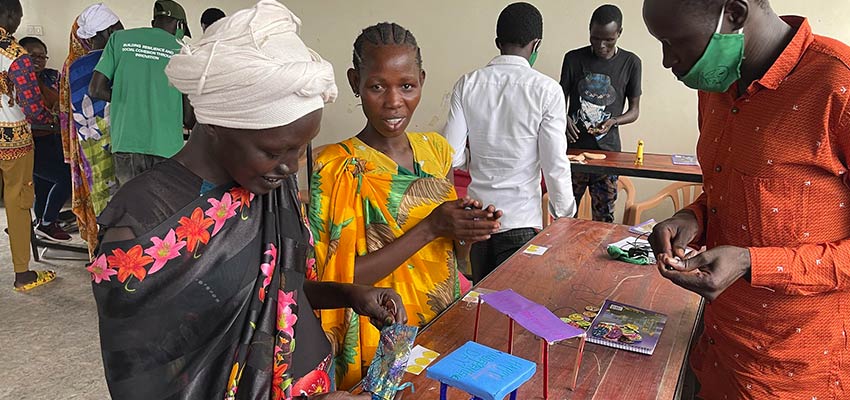
YSAT began as a South Sudanese refugee-led organization in Rhino Camp in Northern Uganda where they collaborate with D-Lab on a Creative Capacity Building project there focused on off grid energy projects and funded by the German cooperation agency GIZ. YSAT is D-Lab’s community partner for implementing the USAID funded pilot project in Pibor and Duk. John Jal was first introduced to D-Lab’s Creative Capacity Building methodology in the 2016 UNHCR Innovation Jam in Kampala Uganda and D-Lab trained him as a trainer in 2018. He has always had a vision that Creative Capacity Building could have a twofold impact in South Sudan. In a very low resource environments like Duk and Pibor, a local innovation ecosystem powered by Creative Capacity Building enables people to use their creativity to solve problems and build technologies and tools. These things provide important services and products that people badly need, such as wheel cart for local transportation, knife sharpening, brickmaking, ovens to bake bread, and fish dryers to preserve fresh food. However, just as important as the services provided by these technologies and the income they provide, is the social cohesion that the trainings are creating in the neutral space of the innovation centers.
At the innovation center: forming relationships across generations as well as ethnic groups
In Pibor, conflict is intergenerational as well as interethnic. The Murle are divided along clan lines, and they have a strict hierarchy based on age groups. Younger generations physically rebel against older generations to seize assets, people are killed, women are raped, and goods are taken. The Creative Capacity Building trainings have brought people from different age groups and different clans together to work in project teams. The innovation center is a place where these different groups mix, form relationships, and begin to build a common vested interest around joint projects. In the closing reflection and in other meetings with local leadership, the D-Lab team heard again and again that this is unique, and that people are building relationships across groups where those relationships did not previously exist.
YSAT believes that if people on different sides of a conflict can begin to know and build relationships with people on the other side, in moments of inter-group tension, those relationships can serve to diffuse violence and promote dialogue. Creative Capacity Building’s strong emphasis on team building and creating warm, strong relationships among participants is uniquely suited to building this kind of social cohesion. In the final reflection session, people also spoke to how different this training is from the trainings they go to where they sit and listen to lectures. “We are learning practical things here, we can make things, we know each other and talk to each other. People look at us and think, how did they learn these things?”
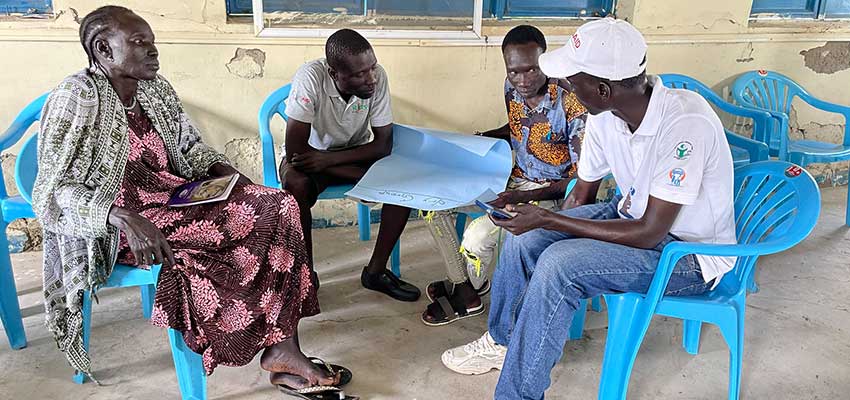
Recurring displacement creates challenging logistics for life in Pibor
Pibor exemplifies what we talk about in D-Lab when we refer to “low-resource communities.” Built around a dirt airstrip that floods constantly in the rainy season, the biggest buildings are huge warehouse tents holding donated food from the World Food Program for periodic distribution. The handful of brick or cement buildings are NGO offices, the military barracks, the local governance office and the International Migration Organization’s Humanitarian Hub where the D-Lab training team stayed.
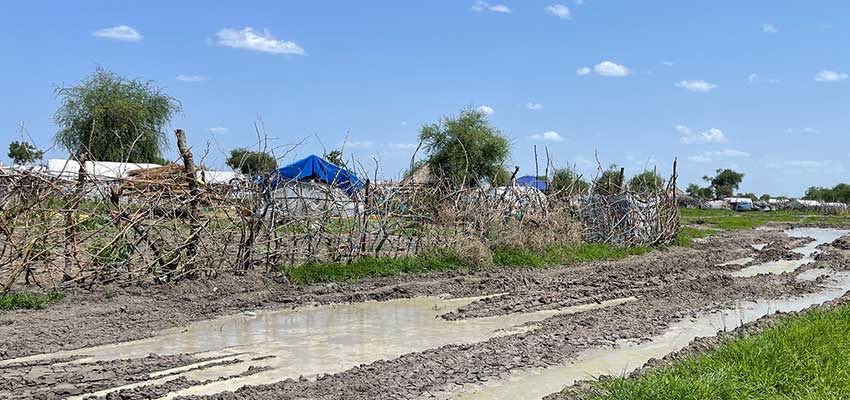
Everyone in town lives in tarp-covered, stick-walled shelters. Sarah, the lead Creative Capacity Building trainer, explained to us that because of recurring displacement due to conflict and the floods, people have given up on building solid houses in Pibor. “When there is conflict, or the floods come, this way they can pack up the sticks, roll up the tarps and can take their house with them. It’s just simpler to live in a temporary shelter.” An entire town of collapsible houses because people have suffered so much displacement? The logistics of life here are a daily challenge for people no electricity or running water, and the only way to bring supplies in is via the small planes that are the only link to Juba. Floods keep the roads impassable except for three months a year, and this past year, conflict closed the road for those three months.
Creating small businesses from technologies generated in Creative Capacity Building workshops
So, a program that teaches people to design and make the things they need has a real impact here. Heewon Lee and I were in Pibor from June 6-12th to do a four-day Creative Capacity Building for Business training. The goal was to help CCB graduates convert their technologies into more viable businesses and expand their impact.
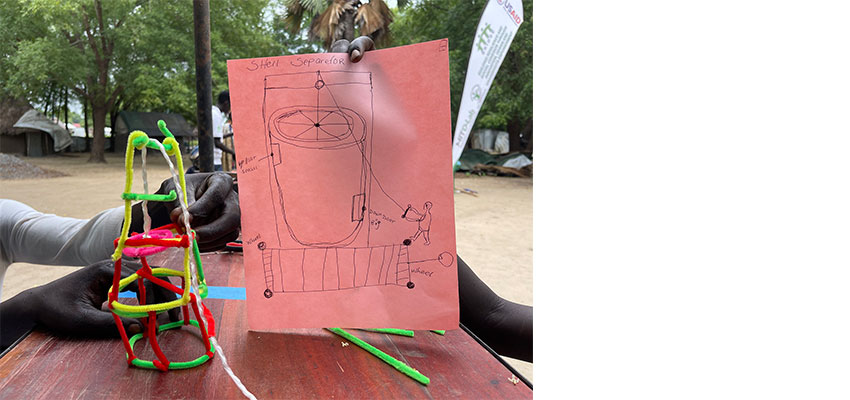
The 20 participants had already completed the basic Creative capacity Building training and represent four teams that have built their own technologies: a fuel-saving oven, a wheel cart, and a fish dryer, all operating in the market. A shoe-making project was paused because of a lack of raw materials, in this case, used tires. The groups were enthusiastic about the technologies they built in CCB and very eager to expand their businesses. At the end of the closing reflection session, several people returned to what Anna said, how important it is to learn to make something rather than be given something. Creative Capacity Building is helping them become more independent and build agency, but it is also helping them build different connections within their own community. Anna had the last word in our concluding reflections: “We are all here, from different age groups and clans, working together, talking, learning about each other. The young and the old working together. This is so important to our community.”

More information
MIT D-Lab Humanitarian Innovation
Contact
MIT D-Lab Humanitarian Innovation Team
Martha Thompson, MIT D-Lab Humanitarian Innovation Specialist

